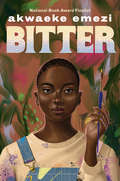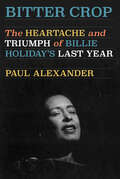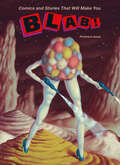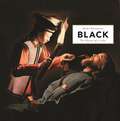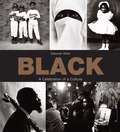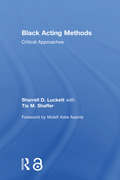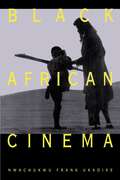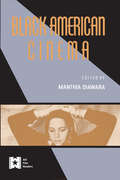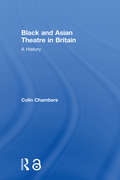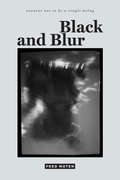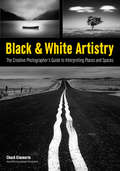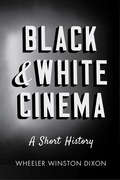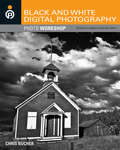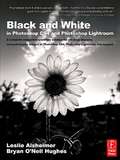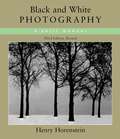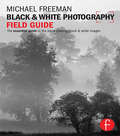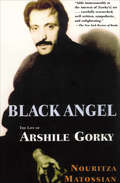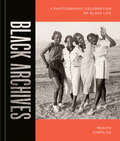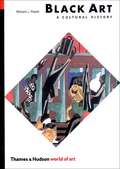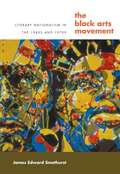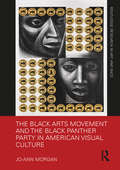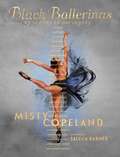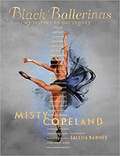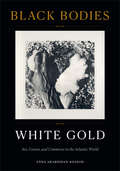- Table View
- List View
Bitter
by Akwaeke EmeziFrom National Book Award finalist Akwaeke Emezi comes a companion novel to the critically acclaimed PET that explores both the importance and cost of social revolution--and how youth lead the way.After a childhood in foster care, Bitter is thrilled to have been chosen to attend Eucalyptus, a special school where she can focus on her painting surrounded by other creative teens. But outside this haven, the streets are filled with protests against the deep injustices that grip the city of Lucille. Bitter&’s instinct is to stay safe within the walls of Eucalyptus . . . but her friends aren&’t willing to settle for a world that&’s so far away from what they deserve. Pulled between old friendships, her artistic passion, and a new romance, Bitter isn&’t sure where she belongs—in the studio or in the streets. And if she does find a way to help the revolution while being true to who she is, she must also ask: at what cost? This timely and riveting novel—a companion to the National Book Award finalist Pet—explores the power of youth, protest, and art.
Bitter Crop: The Heartache and Triumph of Billie Holiday's Last Year
by Paul AlexanderA revelatory look at the tumultuous life of a jazz legend and American cultural iconIn the first biography of Billie Holiday in more than two decades, Paul Alexander—author of heralded lives of Sylvia Plath and J. D. Salinger—gives us an unconventional portrait of arguably America&’s most eminent jazz singer. He shrewdly focuses on the last year of her life—with relevant flashbacks to provide context—to evoke and examine the persistent magnificence of Holiday&’s artistry when it was supposed to have declined, in the wake of her drug abuse, relationships with violent men, and run-ins with the law.During her lifetime and after her death, Billie Holiday was often depicted as a down-on-her-luck junkie severely lacking in self-esteem. Relying on interviews with people who knew her, and new material unearthed in private collections and institutional archives, Bitter Crop—a reference to the last two words of Strange Fruit, her moving song about lynching—limns Holiday as a powerful, ambitious woman who overcame her flaws to triumph as a vital figure of American popular music.
Blab! Volume 1
by Monte BeauchampBLAB!—the Harvey Award-winning anthology of cutting-edge comics, art, and culture—has returned to its comics roots with a stellar lineup of contributors.Noah Van Sciver depicts the tragic demise of Crime Does Not Pay editor Robert Wood. Ryan Heshka recounts the rise and fall of Superman creators Siegel and Shuster. Sasha Velour portrays the making of film director F.W. Murnau&’s Nosferatu. Children&’s book illustrator Giselle Potter examines Peter Rabbit author Beatrix Potter&’s passion as a naturalist. Illustrated articles include the history of the gorilla and a report on UFOs.All this and much more in Comics and Stories That Will Make You BLAB!
Black: The History of a Color
by Michel PastoureauThe story of the color black in art, fashion, and culture—from the beginning of history to the twenty-first centuryBlack—favorite color of priests and penitents, artists and ascetics, fashion designers and fascists—has always stood for powerfully opposed ideas: authority and humility, sin and holiness, rebellion and conformity, wealth and poverty, good and bad. In this beautiful and richly illustrated book, the acclaimed author of Blue now tells the fascinating social history of the color black in Europe.In the beginning was black, Michel Pastoureau tells us. The archetypal color of darkness and death, black was associated in the early Christian period with hell and the devil but also with monastic virtue. In the medieval era, black became the habit of courtiers and a hallmark of royal luxury. Black took on new meanings for early modern Europeans as they began to print words and images in black and white, and to absorb Isaac Newton's announcement that black was no color after all. During the romantic period, black was melancholy's friend, while in the twentieth century black (and white) came to dominate art, print, photography, and film, and was finally restored to the status of a true color.For Pastoureau, the history of any color must be a social history first because it is societies that give colors everything from their changing names to their changing meanings—and black is exemplary in this regard. In dyes, fabrics, and clothing, and in painting and other art works, black has always been a forceful—and ambivalent—shaper of social, symbolic, and ideological meaning in European societies.With its striking design and compelling text, Black will delight anyone who is interested in the history of fashion, art, media, or design.
Black: A Celebration of a Culture (Nyu Series In Social And Cultural Analysis Ser. #11)
by Deborah WillisTucked away in the dusty halls of the Smithsonian archives and nearly forgotten by most historians, black culture is a vast, complex, interconnected web of different people, trends, and lifestyles. Although absent from our collective memory, Deborah Willis has dug through the archives and hunted down the remnants that tell the wonderful and tragic history of a people. Tackling all subjects with bravery and frankness, Deborah Willis's work is a true treasure to behold.Black, A Celebration of a Culture, presents the vibrant panorama of 20th-century black culture in America and around the world. The photos tell one story that resonates throughout the world. Broken up into segments that examine in detail such subjects as children, work, art, beauty, Saturday night and Sunday morning, the photos detail the history and the evolution of a culture. Each photograph, hand-picked by Deborah Willis, America's leading historian of African-American photography, celebrates the world of music, art, fashion, sports, family, worship or play. With over 500 photographs from every time period from the birth of photography to the birth of hip hop, this book is a truly joyous exhibition of black culture. From Jessie Owens to Barry Bonds, Ella Fitzgerald to Halle Berry, Black: A Celebration of a Culture is joyous and inspiring.
Black Acting Methods: Critical Approaches
by Sharrell Luckett Tia M. ShafferBlack Acting Methods seeks to offer alternatives to the Euro-American performance styles that many actors find themselves working with. A wealth of contributions from directors, scholars and actor trainers address afrocentric processes and aesthetics, and interviews with key figures in Black American theatre illuminate their methods. This ground-breaking collection is an essential resource for teachers, students, actors and directors seeking to reclaim, reaffirm or even redefine the role and contributions of Black culture in theatre arts.
Black African Cinema
by Nwachukwu Frank UkadikeFrom the proselytizing lantern slides of early Christian missionaries to contemporary films that look at Africa through an African lens, N. Frank Ukadike explores the development of black African cinema. He examines the impact of culture and history, and of technology and co-production, on filmmaking throughout Africa.Every aspect of African contact with and contribution to cinematic practices receives attention: British colonial cinema; the thematic and stylistic diversity of the pioneering "francophone" films; the effects of television on the motion picture industry; and patterns of television documentary filmmaking in "anglophone" regions. Ukadike gives special attention to the growth of independent production in Ghana and Nigeria, the unique Yoruba theater-film tradition, and the militant liberationist tendencies of "lusophone" filmmakers. He offers a lucid discussion of oral tradition as a creative matrix and the relationship between cinema and other forms of popular culture. And, by contrasting "new" African films with those based on the traditional paradigm, he explores the trends emerging from the eighties and nineties.Clearly written and accessible to specialist and general reader alike, Black African Cinema's analysis of key films and issues—the most comprehensive in English—is unique. The book's pan-Africanist vision heralds important new strategies for appraising a cinema that increasingly attracts the attention of film students and Africanists.
Black American Cinema (AFI Film Readers)
by Manthia DiawaraThis is the first major collection of criticism on Black American cinema. From the pioneering work of Oscar Micheaux and Wallace Thurman to the Hollywood success of Spike Lee, Black American filmmakers have played a remarkable role in the development of the American film, both independent and mainstream.In this volume, the work of early Black filmmakers is given serious attention for the first time. Individual essays consider what a Black film tradition might be, the relation between Black American filmmakers and filmmakers from the diaspora, the nature of Black film aesthetics, the artist's place within the community, and the representation of a Black imaginary. Black American Cinema also uncovers the construction of Black sexuality on screen, the role of Black women in independent cinema, and the specific question of Black female spectatorship. A lively and provocative group of essays debate the place and significance of Spike LeeOf crucial importance are the ways in which the essays analyze those Black directors who worked for Hollywood and whose films are simplistically dismissed as sell-outs, to the Hollywood "master narrative," as well as those "crossover" filmmakers whose achievements entail a surreptitious infiltration of the studios. Black American Cinema demonstrates the wealth of the Black contribution to American film and the complex course that contribution has taken.Contributors: Houston Baker, Jr., Toni Cade Bambara, Amiri Baraka, Jacquie Bobo, Richard Dyer, Jane Gaines, Henry Louis Gates, Jr., Ron Green, Ed Guerrero, bell hooks, Phyllis Klotman, Ntongele Masilela, Clyde Taylor, and Michele Wallace.
Black and Asian Theatre In Britain: A History
by Colin ChambersBlack and Asian Theatre in Britain is an unprecedented study tracing the history of ‘the Other’ through the ages in British theatre. The diverse and often contradictory aspects of this history are expertly drawn together to provide a detailed background to the work of African, Asian, and Caribbean diasporic companies and practitioners. Colin Chambers examines early forms of blackface and other representations in the sixteenth century, through to the emergence of black and Asian actors, companies, and theatre groups in their own right. Thorough analysis uncovers how they led to a flourishing of black and Asian voices in theatre at the turn of the twenty-first century. Figures and companies studied include: Ira Aldridge Henry Francis Downing Paul Robeson Errol John Mustapha Matura Dark and Light Theatre The Keskidee Centre Indian Art and Dramatic Society Temba Edric and Pearl Connor Tara Arts Yvonne Brewster Tamasha Talawa. Black and Asian Theatre in Britain is an enlightening and immensely readable resource and represents a major new study of theatre history and British history as a whole.
Black and Blur
by Fred Moten"Taken as a trilogy, consent not to be a single being is a monumental accomplishment: a brilliant theoretical intervention that might be best described as a powerful case for blackness as a category of analysis."—Brent Hayes Edwards, author of Epistrophies: Jazz and the Literary Imagination In Black and Blur—the first volume in his sublime and compelling trilogy consent not to be a single being—Fred Moten engages in a capacious consideration of the place and force of blackness in African diaspora arts, politics, and life. In these interrelated essays, Moten attends to entanglement, the blurring of borders, and other practices that trouble notions of self-determination and sovereignty within political and aesthetic realms. Black and Blur is marked by unlikely juxtapositions: Althusser informs analyses of rappers Pras and Ol' Dirty Bastard; Shakespeare encounters Stokely Carmichael; thinkers like Kant, Adorno, and José Esteban Muñoz and artists and musicians including Thornton Dial and Cecil Taylor play off each other. Moten holds that blackness encompasses a range of social, aesthetic, and theoretical insurgencies that respond to a shared modernity founded upon the sociological catastrophe of the transatlantic slave trade and settler colonialism. In so doing, he unsettles normative ways of reading, hearing, and seeing, thereby reordering the senses to create new means of knowing.
Black And White Artistry: The Creative Photographer's Guide To Interpreting Places And Spaces
by Chuck KimmerleNumerous books on the market teach photographers how to produce a technically sound black & white landscape image. Others expound tips and tricks you can use to enhance the artistry of those images. This book takes a less-traveled path. Author Chuck Kimmerle teaches photographers who’ve mastered their camera controls to see the possibilities in every landscape. You’ll learn how to identify a scene that lends itself to black & white (and determine which scenes just don’t work), you’ll explore high- and low-key presentations, the effects of various lenses, and how and when to produce straight, graphic, or interpretive presentations of your scene. You’ll also learn how to create "score-and-performance” RAW image and postproduction pairings that lead to pure mastery in every finished photograph. Armed with the insights in this book, readers will learn to see, conceptualize, and create the black & white landscape images that always seemed out of reach.
Black And White Artistry: The Creative Photographer's Guide To Interpreting Places And Spaces
by Chuck KimmerleNumerous books on the market teach photographers how to produce a technically sound black & white landscape image. Others expound tips and tricks you can use to enhance the artistry of those images. This book takes a less-traveled path. Author Chuck Kimmerle teaches photographers who’ve mastered their camera controls to see the possibilities in every landscape. You’ll learn how to identify a scene that lends itself to black & white (and determine which scenes just don’t work), you’ll explore high- and low-key presentations, the effects of various lenses, and how and when to produce straight, graphic, or interpretive presentations of your scene. You’ll also learn how to create "score-and-performance” RAW image and postproduction pairings that lead to pure mastery in every finished photograph. Armed with the insights in this book, readers will learn to see, conceptualize, and create the black & white landscape images that always seemed out of reach.
Black and White Cinema
by Wheeler Winston DixonFrom the glossy monochrome of the classic Hollywood romance, to the gritty greyscale of the gangster picture, to film noir's moody interplay of light and shadow, black-and-white cinematography has been used to create a remarkably wide array of tones. Yet today, with black-and-white film stock nearly impossible to find, these cinematographic techniques are virtually extinct, and filmgoers' appreciation of them is similarly waning. Black and White Cinema is the first study to consider the use of black-and-white as an art form in its own right, providing a comprehensive and global overview of the era when it flourished, from the 1900s to the 1960s. Acclaimed film scholar Wheeler Winston Dixon introduces us to the masters of this art, discussing the signature styles and technical innovations of award-winning cinematographers like James Wong Howe, Gregg Toland, Freddie Francis, and Sven Nykvist. Giving us a unique glimpse behind the scenes, Dixon also reveals the creative teams--from lighting technicians to matte painters--whose work profoundly shaped the look of black-and-white cinema. More than just a study of film history, this book is a rallying cry, meant to inspire a love for the artistry of black-and-white film, so that we might work to preserve this important part of our cinematic heritage. Lavishly illustrated with more than forty on-the-set stills, Black and White Cinema provides a vivid and illuminating look at a creatively vital era.
Black and White Digital Photography Photo Workshop
by Chris BucherHow to create stunning black and white photos in a digital format Shooting pictures in black and white presents unique challenges for beginners and experienced digital photographers alike. A strong understanding of photography's fundamentals is crucial to capturing great black and white images, and factors such as contrast and lighting are much more integral to black and white photography than to color. Black and White Digital Photography Photo Workshop teaches digital photographers the skills they need to master black and white photography. Focuses on the rules of photography and how they apply differently to black and white photography Offers guidance for properly uploading digital images to a computer Explains insider tips and tricks for using Photoshop and Lightroom to successfully enhance black and white images Black and white photography presents different challenges than color photography. In Black and White Digital Photography Photo Workshop, photographers learn how to identify great opportunities for black and white photographs and how to turn those opportunities into stunning monochrome images they can be proud to display.
Black and White in Photoshop CS4 and Photoshop Lightroom: A complete integrated workflow solution for creating stunning monochromatic images in Photoshop CS4, Photoshop Lightroom, and beyond
by Leslie Alsheimer Bryan O'Neil HughesIn the highly anticipated second edition of this groundbreaking book, NAPP GURU award recipient and professional photographer Leslie Alsheimer and Adobe's own Bryan O'Neil Hughes show you everything you need to know to uncover the secrets to successful black and white conversion and printmaking. This comprehensive reference will help you maximize your workflow with coverage of all of the relevant new features of Photoshop CS4 and Lightroom 2, including every stage of the black and white process from capture to printing. Along the way, you'll find in-depth explanations of key topics such as color management, optimizing your workspace, softproofing and calibration (both onscreen and for output), evaluating histograms, non-destructive editing, and much more. New features in this edition include:.In-depth coverage of workflow using the Bridge and Adobe Camera RAW components of CS4.New recipes and tips for advanced black and white conversion .Coverage of Lightroom and Photoshop integration features.An overview of scanners and scanning your black and white film.Advice on exposure essentials and how to apply the Zone System to your digital shooting .A brand new chapter on black and white and creative image editing in LightroomBreathtaking color and black and white photographs, including Leslie Alsheimer's image which won the coveted Vincent Versace award at Photoshop World in 2008, will inspire you to expand your own creativity to limitless possibilities. This is the essential resource for any photographer shooting black and white in the digital age.
Black and White Photography: A Basic Manual
by Henry HorensteinBLACK WHITE PHOTOGRAPHY is a comprehensive instructional book that covers every element of photography. Henry Horenstein's books have been widely used at leading universities, including Parsons School of Design, Harvard, Yale, Princeton, and MIT as well as in continuing education programs. Horenstein is a professor at the Rhode Island School of Design. BLACK WHITE PHOTOGRAPHY is a real bargain among photographic how-to books.
Black and White Photography Field Guide: The essential guide to the art of creating black & white images (The Field Guide Series)
by Michael FreemanIn this pocket-sized, portable guide, renowned photographer Michael Freeman addresses one of photography's most popular--and challenging--areas: black and white. With advice on lighting, shooting, conversion, and post-production, this is know-how that no photographer can afford to be without. Perfect for the digital photographer who wants to shoot and process RAW files as black and whie images.
Black Angel: The Life of Arshile Gorky
by Nouritza MatossianA biography of the Armenian painter that “adds immeasurable to the interest of [his] art . . . Carefully researched, well written, [and] enlightening” (The New York Review of Books). In this first full-scale biography, Nouritza Matossian charts the mysterious and tragic life of Arshile Gorky, one of the most influential painters of the twentieth century. Born Manoug Adoian in Armenia, he survived the Turkish genocide of 1915 before coming to America, where he posed as a cousin of the famous Russian author Maxim Gorky. One of the first abstract expressionists, Gorky became a major figure of the New York School, which included de Kooning, Rothko, Pollock, and others. But after a devastating series of illnesses, injuries, and personal setbacks, he committed suicide at the age of forty-six. In Black Angel, arts journalist Matossian analyzes Gorky’s personal letters, as well as other new source material. She writes with authority, insight, and compassion about the powerful influence Gorky’s life and Armenian heritage had upon his painting.
Black Archives: A Photographic Celebration of Black Life
by Renata CherliseA photographic celebration and exploration of Black identity and experience through the twentieth century from the founder and curator of the hit multimedia platform Black Archives.&“A spell-binding visual narrativization of family, culture, and history.&”—Thelma Golden, director and chief curator of the Studio Museum in HarlemRenata Cherlise&’s family loved capturing their lives in photographs and home movies, sparking her love of archival photography. Following in her family&’s footsteps, Cherlise established Black Archives, which presents a nuanced representation of Black people across time living vibrant, ordinary lives. Through the platform, many have discovered and shared images of themselves and their loved ones experiencing daily life, forming multidimensional portraits of people, places, and the Black community. These photographs not only tell captivating stories, they hold space for collective memory and kinship. Black Archives is a stunning collection of timeless images that tell powerful, joyful stories of everyday life and shed light on Black culture&’s dynamic, enduring influence through the generations. The images showcase reunions, nights out on the town, parents and children, church and school functions, holidays, big life events, family vacations, moments at home, and many more occasions of leisure, excitement, reflection, and pride. Featuring more than three hundred images that spotlight the iconic and the candid, Black Archives offers a nuanced compendium of Black memory and imagination.
Black Art: A Cultural History
by Richard J. PowellThe African diaspora, "a direct result of the transatlantic slave trade and Western colonialism," generated a wide array of artistic achievements in the past century, from blues to reggae, from the paintings of Henry Ossawa Tanner to the video installations of Keith Piper. Richard Powell's study concentrates on the works of art themselves and on how these works, created during a time of major social upheaval and transformation, use black culture as both subject and context. From musings on the "the souls of black folk" in early twentieth-century painting, sculpture, and photography to questions of racial and cultural identities in performance, media, and computer-assisted arts in the 1990s, the book draws on the works of hundreds of artists including Jean-Michel Basquiat, Romare Bearden, Elizabeth Catlett, Lois Mailou Jones, Wifredo Lam, Jacob Lawrence, Spike Lee, Archibald Motley, Jr. , Faith Ringgold, and Gerard Sekoto. This revised edition includes expanded coverage of video art and a new chapter that discusses work by a number of artists who have newly risen to prominence, such as Chris Ofili, Kara Walker, and Ren e Cox. Biographies of more than 170 key artists provide a unique art-historical reference. Placing its emphasis on black cultural themes rather than on black racial identity, this groundbreaking book is an important exploration of the visual representations of black culture throughout the twentieth century and into the twenty-first.
The Black Arts Movement
by James SmethurstEmerging from a matrix of Old Left, black nationalist, and bohemian ideologies and institutions, African American artists and intellectuals in the 1960s coalesced to form the Black Arts Movement, the cultural wing of the Black Power Movement. In this comprehensive analysis, James Smethurst examines the formation of the Black Arts Movement and demonstrates how it deeply influenced the production and reception of literature and art in the United States through its negotiations of the ideological climate of the Cold War, decolonization, and the civil rights movement.Taking a regional approach, Smethurst examines local expressions of the nascent Black Arts Movement, a movement distinctive in its geographical reach and diversity, while always keeping the frame of the larger movement in view. The Black Arts Movement, he argues, fundamentally changed American attitudes about the relationship between popular culture and "high" art and dramatically transformed the landscape of public funding for the arts.
The Black Arts Movement and the Black Panther Party in American Visual Culture (Routledge Research in Art and Race)
by Jo-Ann MorganThis book examines a range of visual expressions of Black Power across American art and popular culture from 1965 through 1972. It begins with case studies of artist groups, including Spiral, OBAC and AfriCOBRA, who began questioning Western aesthetic traditions and created work that honored leaders, affirmed African American culture, and embraced an African lineage. Also showcased is an Oakland Museum exhibition of 1968 called "New Perspectives in Black Art," as a way to consider if Black Panther Party activities in the neighborhood might have impacted local artists’ work. The concluding chapters concentrate on the relationship between selected Black Panther Party members and visual culture, focusing on how they were covered by the mainstream press, and how they self-represented to promote Party doctrine and agendas.
Black Ballerinas: My Journey to Our Legacy
by Misty CopelandFrom New York Times bestselling and award-winning author and American Ballet Theatre principal dancer Misty Copeland comes an illustrated nonfiction collection celebrating dancers of color who have influenced her on and off the stage. <p><p> As a young girl living in a motel with her mother and her five siblings, Misty Copeland didn't have a lot of exposure to ballet or prominent dancers. She was sixteen when she saw a black ballerina on a magazine cover for the first time. The experience emboldened Misty and told her that she wasn't alone—and her dream wasn't impossible. <p><p> In the years since, Misty has only learned more about the trailblazing women who made her own success possible by pushing back against repression and racism with their talent and tenacity. Misty brings these women's stories to a new generation of readers and gives them the recognition they deserve. <p><p> With an introduction from Misty about the legacy these women have had on dance and on her career itself, this book delves into the lives and careers of women of color who fundamentally changed the landscape of American ballet from the early 20th century to today.
Black Ballerinas
by Misty CopelandFrom New York Times bestselling and award-winning author and American Ballet Theatre principal dancer Misty Copeland comes an illustrated nonfiction collection celebrating dancers of color who have influenced her on and off the stage. <p><p> As a young girl living in a motel with her mother and her five siblings, Misty Copeland didn’t have a lot of exposure to ballet or prominent dancers. She was sixteen when she saw a black ballerina on a magazine cover for the first time. The experience emboldened Misty and told her that she wasn’t alone—and her dream wasn’t impossible. <p> In the years since, Misty has only learned more about the trailblazing women who made her own success possible by pushing back against repression and racism with their talent and tenacity. Misty brings these women’s stories to a new generation of readers and gives them the recognition they deserve. <p> With an introduction from Misty about the legacy these women have had on dance and on her career itself, this book delves into the lives and careers of women of color who fundamentally changed the landscape of American ballet from the early 20th century to today.
Black Bodies, White Gold: Art, Cotton, and Commerce in the Atlantic World
by Anna Arabindan-KessonIn Black Bodies, White Gold Anna Arabindan-Kesson uses cotton, a commodity central to the slave trade and colonialism, as a focus for new interpretations of the way art, commerce, and colonialism were intertwined in the nineteenth-century Atlantic world. In doing so, Arabindan-Kesson models an art historical approach that makes the histories of the Black diaspora central to nineteenth-century cultural production. She traces the emergence of a speculative vision that informs perceptions of Blackness in which artistic renderings of cotton—as both commodity and material—became inexorably tied to the monetary value of Black bodies. From the production and representation of “negro cloth”—the textile worn by enslaved plantation workers—to depictions of Black sharecroppers in photographs and paintings, Arabindan-Kesson demonstrates that visuality was the mechanism through which Blackness and cotton became equated as resources for extraction. In addition to interrogating the work of nineteenth-century artists, she engages with contemporary artists such as Hank Willis Thomas, Lubaina Himid, and Yinka Shonibare CBE RA, who contend with the commercial and imperial processes shaping constructions of Blackness and meanings of labor.
